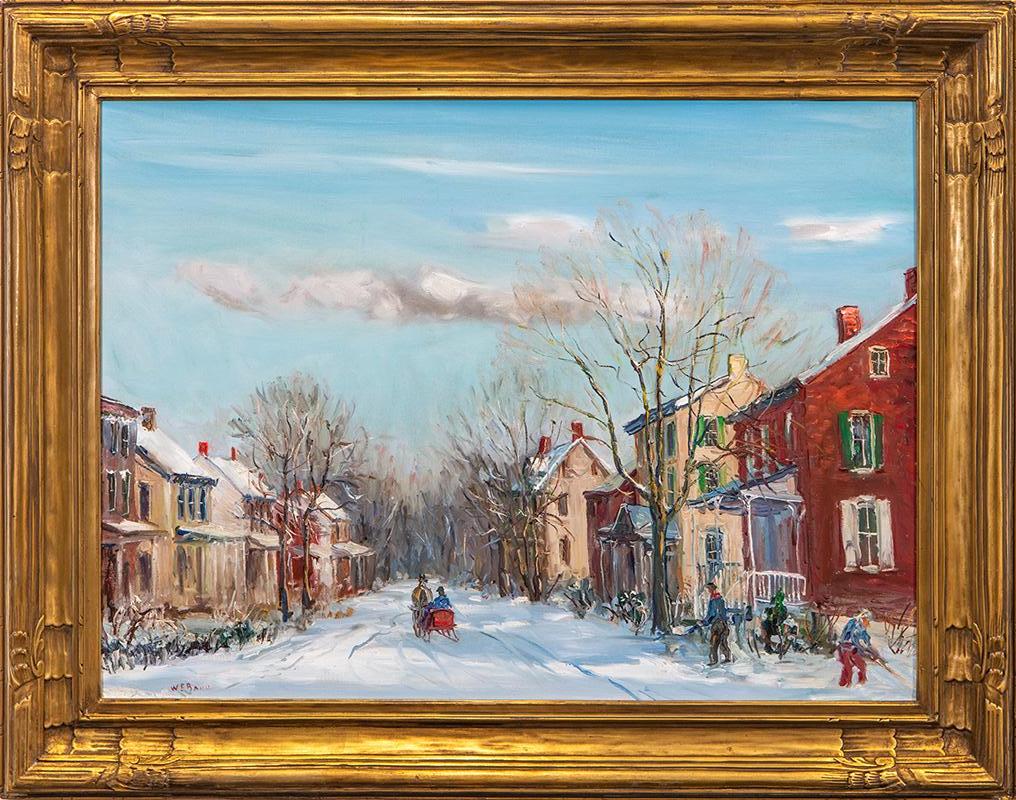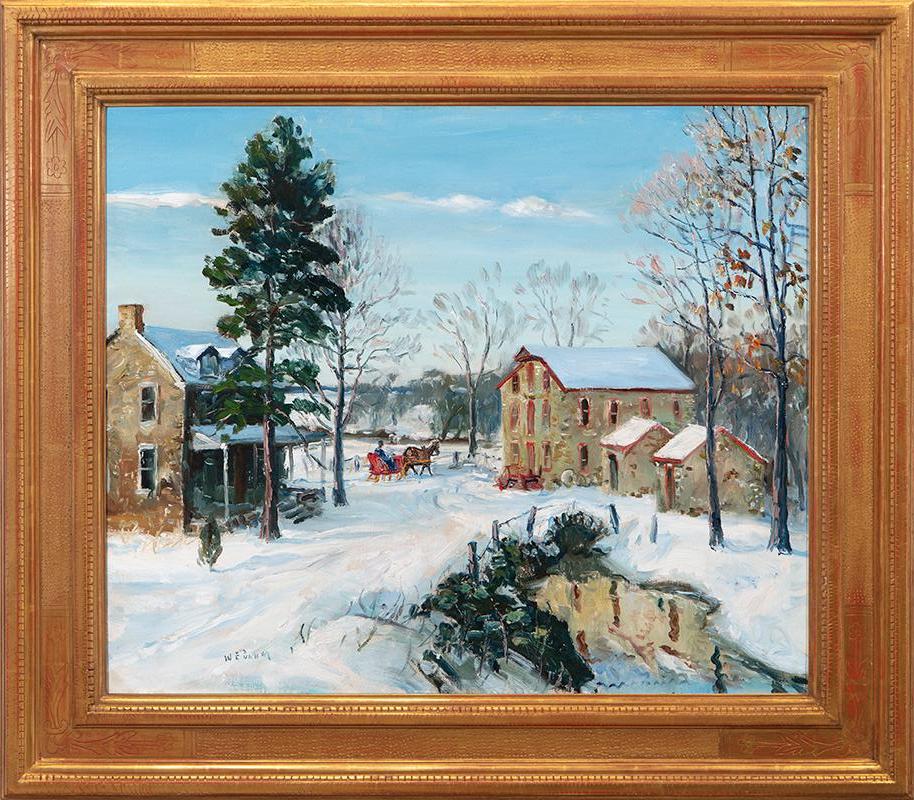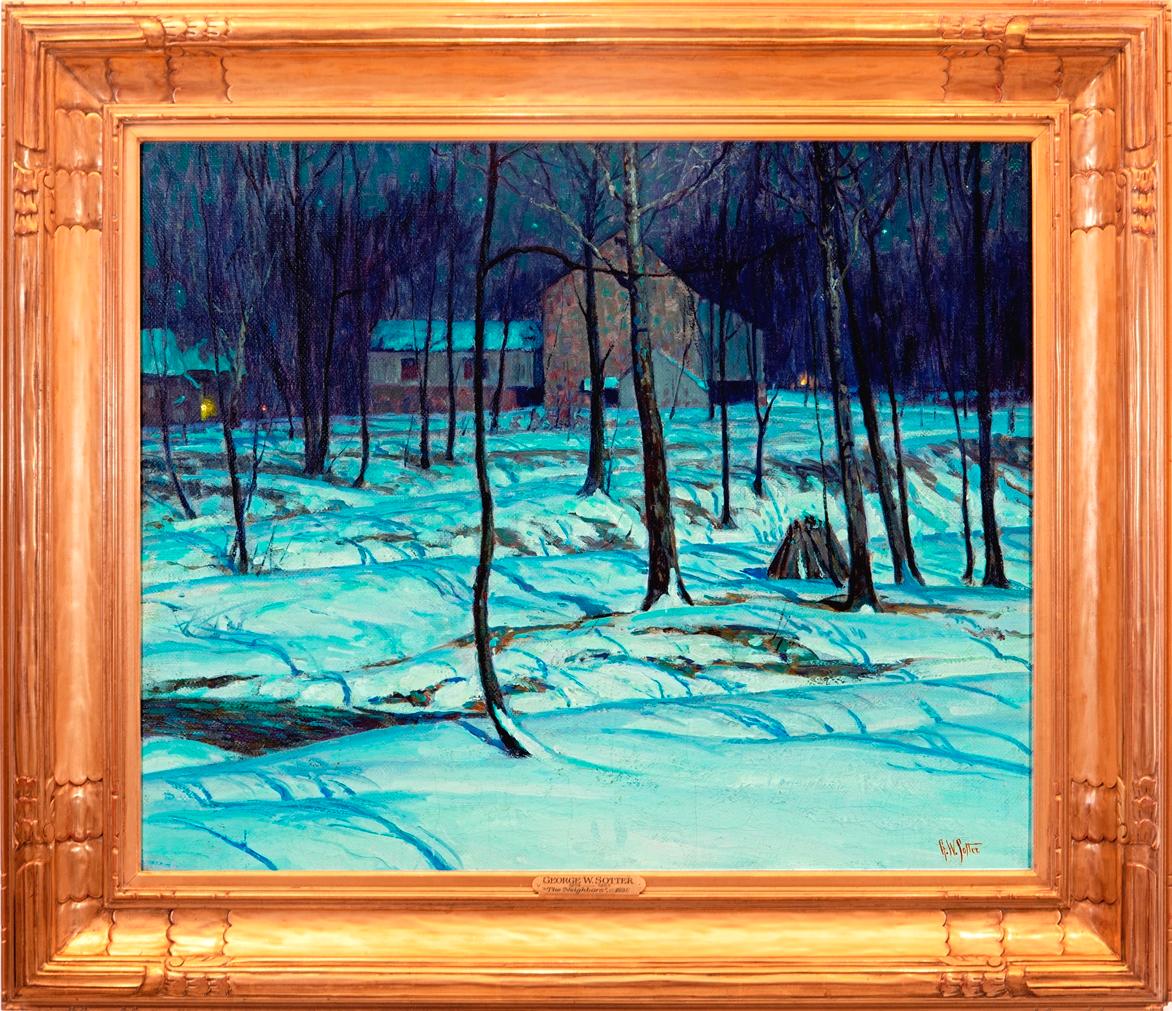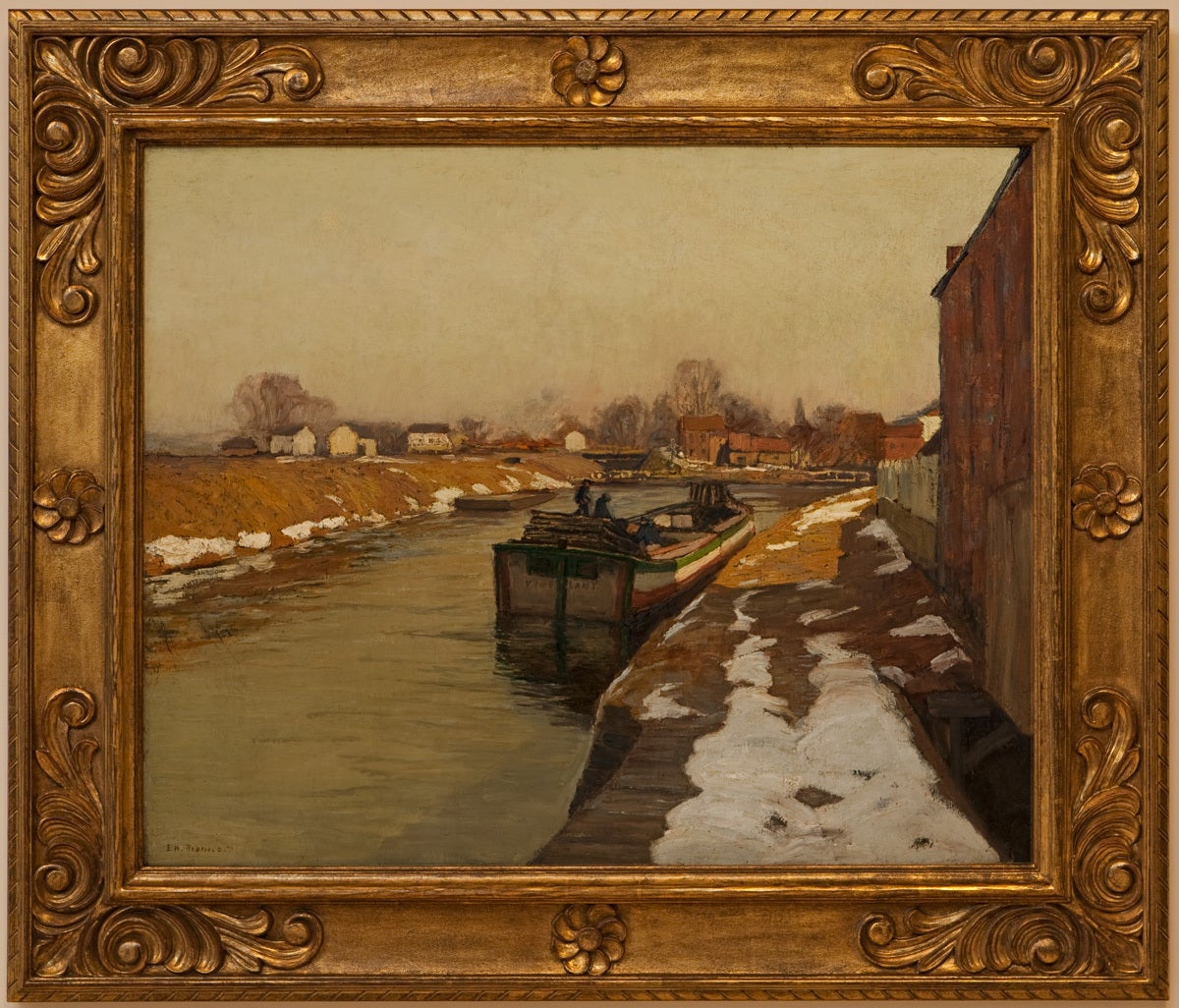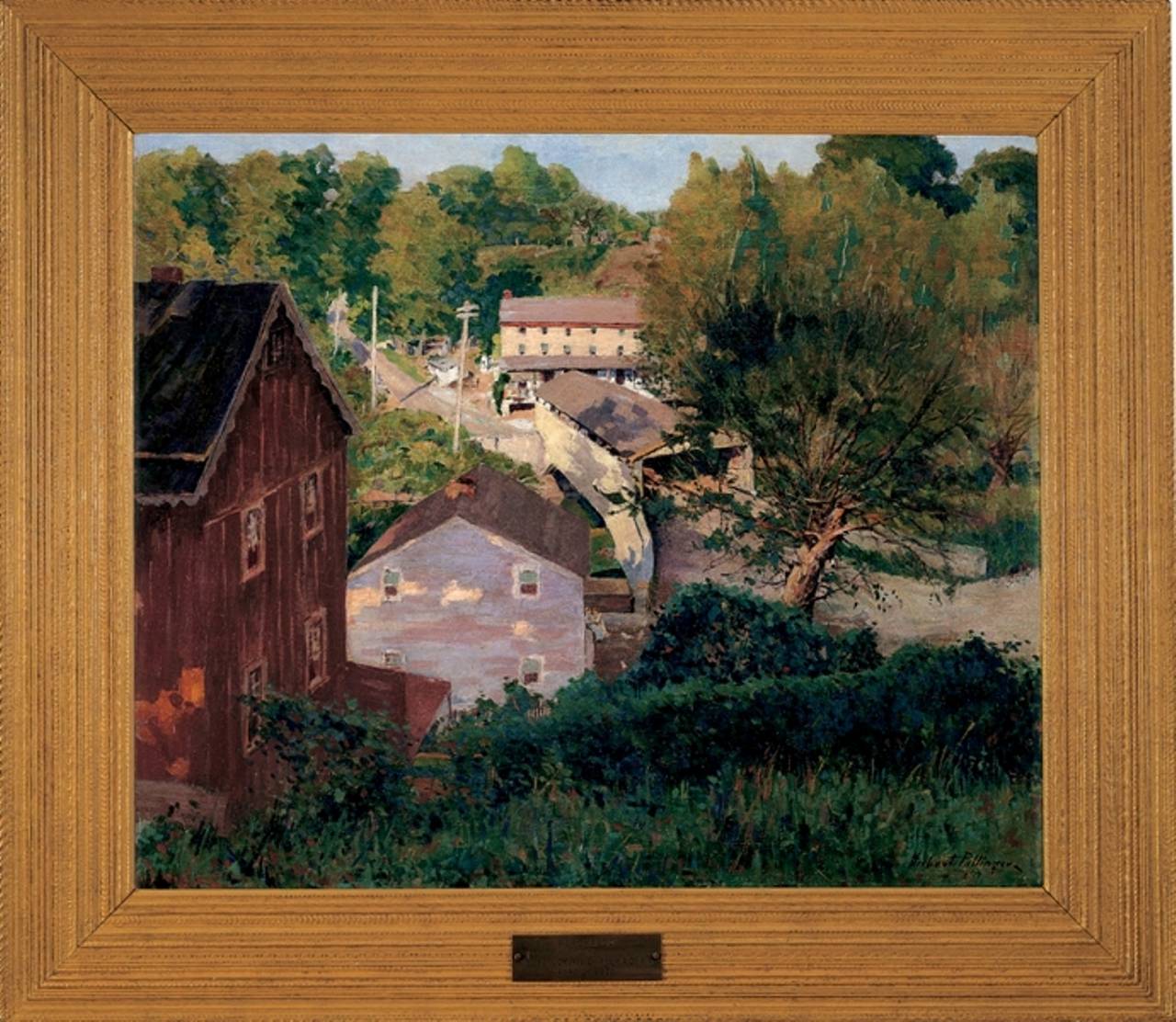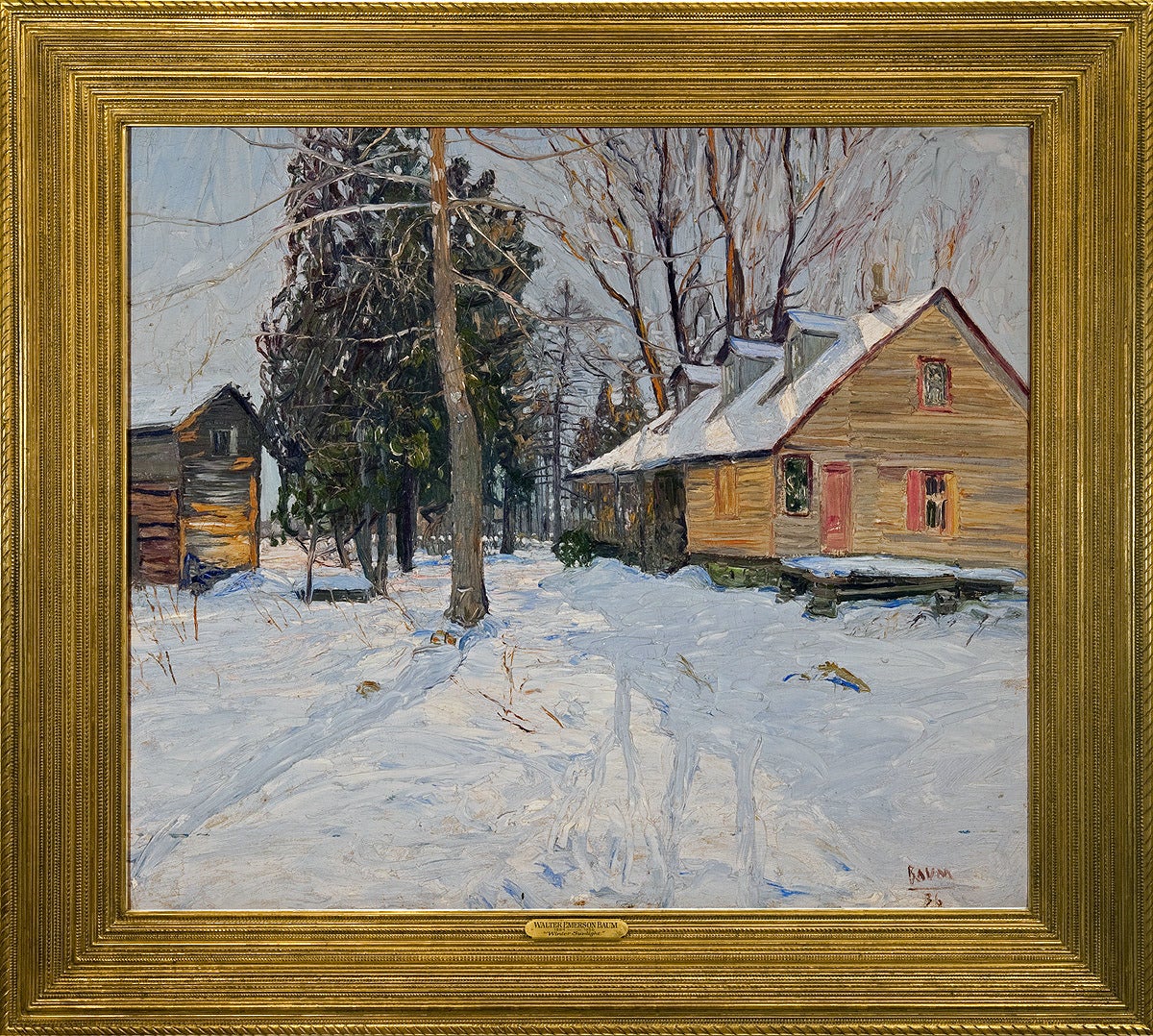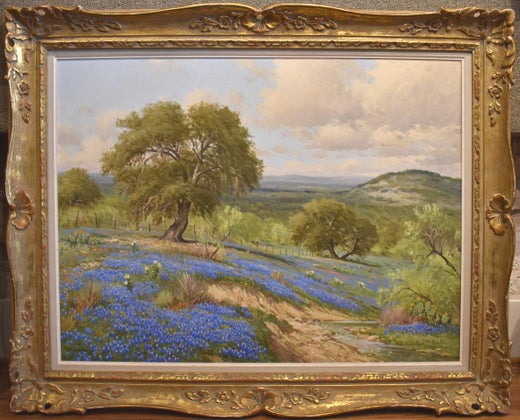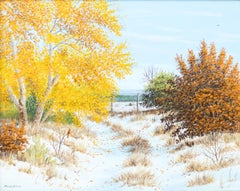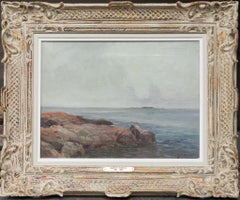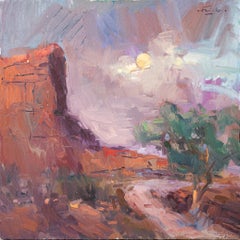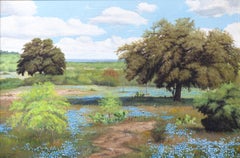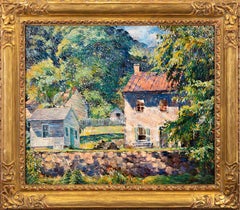
Spring Pastoral Landscape w/ Bluebonnets
View Similar Items
Want more images or videos?
Request additional images or videos from the seller
1 of 3
Porfirio SalinasSpring Pastoral Landscape w/ Bluebonnets
About the Item
- Creator:Porfirio Salinas (1910-1972, American)
- Dimensions:Height: 9 in (22.86 cm)Width: 11 in (27.94 cm)
- Medium:
- Movement & Style:
- Period:
- Condition:
- Gallery Location:Austin, TX
- Reference Number:Seller: BT-231581stDibs: LU117129398092
Porfirio Salinas
(1910-1973)
Porfirio Salinas was a self-taught artist who painted landscapes of Central Texas with an emphasis on the vast bluebonnet fields that grow there in the springtime. Born in 1910 in Bastrop, Texas, he attended public schools in San Antonio. He also observed works in progress by the director of the San Antonio Art School, Jose Arpa, as well as landscape painter, Robert Wood. Wood is said to have paid Salinas five dollars a picture to paint bluebonnets because "he hated to paint bluebonnets". Salinas served in the military from 1943 to 1945. Although he was assigned to Fort Sam Houston, he was allowed to live at home. At the fort, Colonel Telesphor Gottchalk assigned him to paint murals for the officers lounge and various other projects, and Salinas continued to be able to paint during his entire conscripted period. Even before he achieved notoriety among galleries, dealers, and museums, Salinas was widely followed and appreciated by many Texans, including former President Lyndon B. Johnson, who may be considered responsible for launching Salinas popularity beyond the boundaries of Texas. In 1973, Texas capital, Austin, honored Salinas for having "done much to bring the culture of Mexico and Texas closer together with his paintings". Salinas died in April 1973 in San Antonio, Texas.
About the Seller
5.0
Vetted Seller
These experienced sellers undergo a comprehensive evaluation by our team of in-house experts.
Established in 1964
1stDibs seller since 2019
97 sales on 1stDibs
Typical response time: 2 hours
Authenticity Guarantee
In the unlikely event there’s an issue with an item’s authenticity, contact us within 1 year for a full refund. DetailsMoney-Back Guarantee
If your item is not as described, is damaged in transit, or does not arrive, contact us within 7 days for a full refund. Details24-Hour Cancellation
You have a 24-hour grace period in which to reconsider your purchase, with no questions asked.Vetted Professional Sellers
Our world-class sellers must adhere to strict standards for service and quality, maintaining the integrity of our listings.Price-Match Guarantee
If you find that a seller listed the same item for a lower price elsewhere, we’ll match it.Trusted Global Delivery
Our best-in-class carrier network provides specialized shipping options worldwide, including custom delivery.More From This Seller
View AllSnowy Landscape w Cardinal
By Manuel Garza
Located in Austin, TX
"Snowy Landscape w Cardinal" by Manuel Garza
Oil on Canvas
16 x 20 inches
Framed size 24 x 28"
A serene, naturalistic rendition of a forested Texas l...
Category
Late 20th Century American Impressionist Landscape Paintings
Materials
Canvas, Oil
"Costal Scene" Early 20th Century Seascape
By Chauncey Foster Ryder
Located in Austin, TX
"Coastal Scene" is an original oil painting by Chauncey Ryder that depicts a serene, misty seascape. The foreground features a rock formation with patches of green moss emerging from...
Category
20th Century American Impressionist Landscape Paintings
Materials
Oil, Canvas
"Moon Over Monument Valley"
Located in Austin, TX
An American Impressionist depiction of a moonlit night in Monument Valley, Arizona. It features a palette of purple, pink, and dark blue.
Artist: Guido Frick...
Category
21st Century and Contemporary American Impressionist Landscape Paintings
Materials
Canvas, Oil
$4,048 Sale Price
20% Off
Texas Pastoral Landscape with Bluebonnets
By Manuel Garza
Located in Austin, TX
A luminous, oil on canvas painting by Texas plain air painter Manuel Garza (American, B. 1940) measuring 24 by 36 inches. The painting depicts an idyllic nature scene set in Central Texas in the spring. The landscape features majestic oak trees, green mesquite bushes, prickly pear cacti, and fields of the Texas State flower: bluebonnets. The vast landscape expands into the distance beneath a blue sky with fluffy white cumulous clouds.
The painting is beautifully framed and ready to hang in a modern, brown wood and gold leaf frame measuring 42 by 30 inches.
Manuel Garza
(American, B. 1940)
Manuel Garza has made his vocation the painting of Central Texas Landscapes. Born in the Hill country, his parents were migrant farm workers. He traveled all over Texas and as far north as Michigan with his family, working along side them in the fields.
It was while picking cotton...
Category
Late 20th Century American Impressionist Landscape Paintings
Materials
Canvas, Oil
Old House, Built in 1848
By Gilbert Neumann
Located in Austin, TX
"Old House, Built in 1848" by painter Gilbert F. Neumann
Medium: Oil paint on panel
Size: 9 x 12 inches
Frame Size: 14 x 18.5 inches
A nostalgic painting of ...
Category
20th Century American Impressionist Landscape Paintings
Materials
Panel, Oil
River Scene
By Jean Metzinger
Located in Austin, TX
"River Scene"
Artist: Jean Metzinger
Medium: Oil on Canvas
Size: 23" x 28.75"
Date 1902-3
Metzinger Catalogue Raisonne Number: AM-02-002.1, by the Regis...
Category
20th Century Impressionist Landscape Paintings
Materials
Canvas, Oil
You May Also Like
"Christmas Time, Sellersville"
By Walter Emerson Baum
Located in Lambertville, NJ
Jim’s of Lambertville Fine Art Gallery is proud to present this piece by Walter Emerson Baum (1884 - 1956).
Born in Sellersville, Pennsylvania, Walter Baum was one of the only membe...
Category
1930s American Impressionist Landscape Paintings
Materials
Oil, Canvas
"Bucks County Mill"
By Walter Emerson Baum
Located in Lambertville, NJ
Jim's of Lambertville Fine Art Gallery is proud to present this piece by Walter Emerson Baum (1884 - 1956).
Born in Sellersville, Pennsylvania, Walter Baum was one of the only members of the New Hope Art Colony actually born in Bucks County...
Category
1930s American Impressionist Landscape Paintings
Materials
Oil, Canvas
"Sunlit House, Centre Bridge"
By Clarence Raymond Johnson
Located in Lambertville, NJ
Jim's of Lambertville Fine Art Gallery is proud to present this piece by Clarence Raymond Johnson (1894 - 1981).
Clarence Johnson was an important New Hope School Impressionist painter who was active from 1917 until 1935. Born in Ohio, Johnson began his studies at the Columbus Art School. He then came to the Pennsylvania Academy of the Fine Arts where he studied under Daniel Garber, Emil Carlsen, and Cecilia Beaux...
Category
1920s American Impressionist Landscape Paintings
Materials
Canvas, Oil
"End of the Day, Gloucester Harbor"
By John Fulton Folinsbee
Located in Lambertville, NJ
Jim's of Lambertville Fine Art Gallery is proud to present this piece by John Fulton Folinsbee (1892 - 1972).
One of the finest painters to embark upon the New Hope Art Colony, John...
Category
1910s American Impressionist Landscape Paintings
Materials
Oil, Canvas
"Forest Strongholds"
By John F. Carlson
Located in Lambertville, NJ
Signed lower right. Complemented by a hand carved and gilt frame.
Exhibited at the National Academy of Design, 1928
Category
20th Century American Impressionist Landscape Paintings
Materials
Canvas, Oil
"Alley Fiends"
By John R. Grabach
Located in Lambertville, NJ
Jim’s of Lambertville is proud to offer this artwork by:
John R. Grabach (1886 - 1981)
John Grabach was a highly regarded New Jersey artist, teacher, and author of the classic text...
Category
1930s American Impressionist Landscape Paintings
Materials
Canvas, Oil
Recently Viewed
View AllMore Ways To Browse
Bluebonnet Painting
Bluebonnets Landscape Paintings
Bluebonnet Oil Paintings
Bluebonnet Oil
Salinas Porfirio
Salinas Bluebonnets
Sacre Coeur Paris
Winery Art
Alan Woods Paintings
Antique Seaside Painting
Ed Harris
Frank Hudson
Goose Painting
James Graham
Lincolnshire Painting
Oil Pastel Paintings Sunsets
Painting With Beach Umbrellas
Paul Waters
